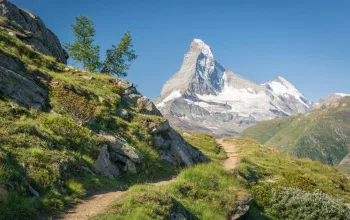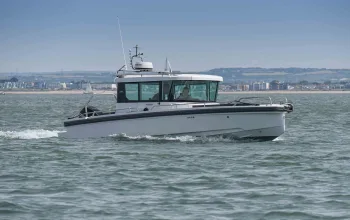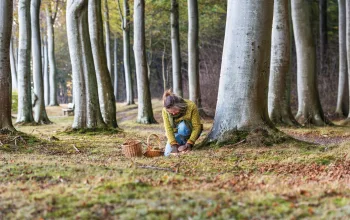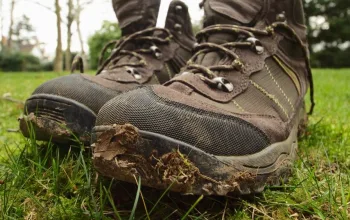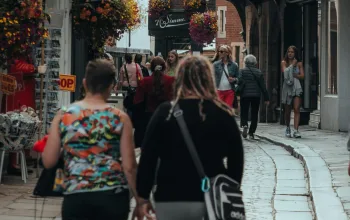What to pack
Tools and spares
Bike forums are littered with bike touring kit lists but in truth the list changes depending on where you’re touring and for how long: the more remote - and therefore the fewer bike shops along the way - the more spares you should take. As a minimum, pack these: a pump, a multi-tool with chain splitter, a spoke tool, patch repair kit, two inner tubes, four spare spokes for each wheel (if you’re going to be in a remote location), a few magic chain links for re-joining your chain, tyre levers, a Leatherman, spare light batteries, sun block and soap.
Clothes and kit
The basics are: 2 pairs of baggy shorts, 2 pairs of bib shorts, 2 jerseys, 1 long-sleeved base layer, 4 pairs of socks, lightweight tracksuit trousers, 1 jacket and one pair of trainers. There’s no point in packing a jacket that's too hot to ride in – instead pack a lightweight wind-proof which is mainly for insulation, and with which you can layer up. The occasional drenching may soak you through, but it rarely rains all day for days on end! Many people take something to read for when they’re not on the bike, but others prefer music on an mp3 player. Either way, don’t forget to look after your mind as well as your body – especially if you’re heading off on your own.
Packing your bags
Pack the heaviest stuff at the bottom of front low-loader packs, which attach to the forks. This will help you keep a lower centre of gravity, and spreading weight over the front wheel will also improve the bike’s stability and handling. It should make your back wheel last a bit longer as well – it’s already carrying most of your weight. Don’t forget to pack the stuff you need every day at the top of your packs – such as your camera and stove. When it comes to packing your clothes, it’s better to roll each item individually, rather than fold.
Choosing a luggage set up
Bar bars can be really useful for keeping useful stuff like your camera, wallet and map literally close to hand, and can be removable to take with you into shops or cafes. Other bags in a classic fully laden six-bag set up include two low-loaders at the front, two back panniers and a top pack on the back rack. If you’re camping, this rack-top bag can be your ‘house’ with tent, sleeping mat and bag, plus everything you need to set up camp. When packing it’s best to assume that it will be raining all the time, so organise your kit so that you don't have to open every bag for every part of the day.
What about the kitchen sink?
Everyone takes too much, so when you’re packing for the first time, lay out everything before you pack and then be ruthless. In a way, the longer you're travelling for, the less you need – it's not as if you can carry clean clothes for a month, even if you wanted to. Try and resist strapping loads of extra things to the outside of your packs and bike, as you’ll only lose them or worse, get them snagged in your bike’s moving parts.
Getting your bike ready
With a few tweaks for comfort and load-carrying any bike can be turned to two-wheel holidaying. Here are a few things to consider…
Comfort first
Forget about trying to find the perfect saddle days before you set off on your travels – chances are you’ll pick one that is even more uncomfortable. You’re far better off wearing a good pair of padded cycling shorts. If you’re not happy riding in Lycra – and let’s face it, it’s an acquired look – then compromise by wearing racing bibs under baggies. You won’t regret it – more to the point, you certainly might if you don’t. For long tours, or if you’re not used to any real time in the saddle, then apply chamois cream before and even during each day's ride. When it comes to saddle sores prevention is always better than cure.
Tyre choice
Although fatter tyres are always more comfortable, don’t necessarily fit the chunkiest, toughest tyres you can squeeze into your frame as you might not enjoy the riding as much. A tough training tyre of between 25 and 28mm width, with added puncture protection is a good compromise for speed and comfort.
Hand postitions
For long hours on the road, the more possible hand positions you have the more comfortable your ride will be. This is why many swear by racing style ‘drop’ bars are best, as they give most hand positions and let you get lower for headwinds and then sit up for a rest. For extra comfort, especially if you’re going somewhere with rough roads, fit padded bar tape. A quick, easy fix for a more upright, comfortable riding position is to ‘flip’ your bar' stem to point upwards instead of horizontal.
Look after your feet
Single-sided road pedals and light, cleated shoes might seem like an efficient cycling choice, they’re a false weight and space economy if you have to carry and extra pair of shoes for off the bike. You’re better off fitting pedals that let you ride with shoes you can also wear off the bike. For example, double-sided clipless mountain bike pedals such as Shimano SPDs, Time Atac and Speedplays with mountain bike or touring shoes are a good compromise. If you take off-bike flip-flops remember cheapest are actually also generally lightest.
Final tips
As a general rule, carry kit on the bike, not your back. Carrying a back pack is okay for short rides but for day-in-day-out riding they can be tiring, sweaty and increase saddle discomfort by putting more weight on your behind! Fit two bottle cages – if you’re riding somewhere where water is easily had from taps, you can fill the second bottle with tools. To carry more, and if you don't have fixing points for racks, try a clip-on seatpost rack like Topeak's QR Beam Rack, or a front triangle bag like Alpkit.com's custom-made Stingray.






